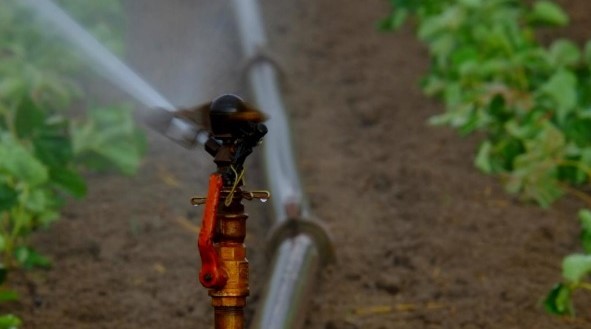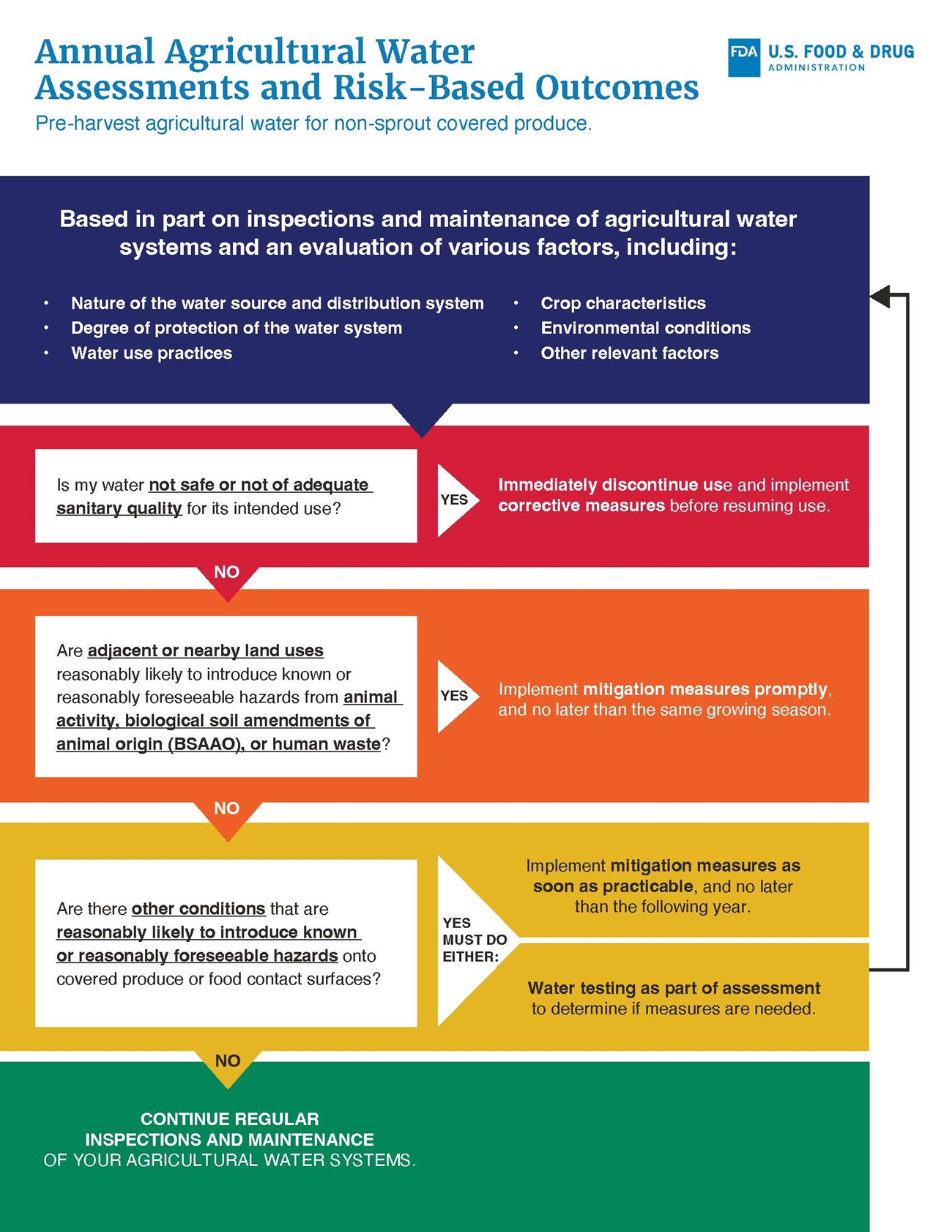
Tucker Diego, VT Agency of Agriculture, Food & Markets
The U.S. Food and Drug Administration (FDA) recently published revised pre-harvest agricultural water requirements for produce farms subject to the Food Safety Modernization Act (FSMA) Produce Safety Rule.
Pre-harvest agricultural water is water used during growing that directly contacts produce, such as water used for irrigation, crop sprays, or frost protection using a direct application method.
Produce farms are now required to make pre-harvest agricultural water assessments to identify any potential hazards and implement corrective or mitigation measures as appropriate. These revisions replace the mandatory microbial water quality testing that was previously required in the 2015 version of the Produce Safety Rule. While no longer required, microbial water quality test result can still be an important factor for a farm to consider if they choose to conduct testing as part of their agricultural water assessment.
Compliance dates for the pre-harvest agricultural water requirements are tiered by farm size. Farms subject to the Produce Safety Rule with annual produce sales above $500,000 must comply by April 7, 2025. Farms with sales between $250,000 and $500,000 must comply by April 6, 2026, and farms with sales between $25,000 and $250,000 by April 5, 2027.
Key requirements:
Annual Agricultural Water Assessment – Produce farms are required to conduct annual agricultural water assessments to evaluate factors that can impact the produce safety of their water. Factors include:
-
The location, type, and degree of protection of the farm’s agricultural water sources and distribution systems
-
Agricultural water application methods and application timing
-
Crop characteristics
-
Environmental conditions
-
Other relevant factors, such as the results of any microbial water quality testing
Risk-Based Outcomes – Based on the findings of annual agricultural water assessments, produce farms must determine if corrective or mitigation measures are necessary in order to reduce the potential for contamination of produce or food contact surfaces with hazards identified in their assessment.
The chart below summarizes the actions farms are required to take based on the outcome of their assessment:

For more information, please contact Tucker Diego at tucker.diego@vermont.gov or by phone 802-622-4412.
Further Resources:

